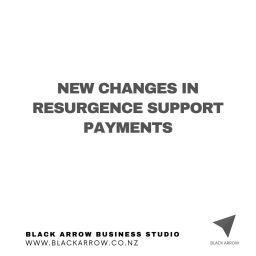All New Zealanders contribute to the ACC levies, which fund injury claims for anyone in the country.
As a small business owner, it is necessary to pay an annual ACC Work levy to ensure coverage for both yourself and your employees, who are your most valuable asset.
Additionally, the ACC Earners’ levy is deducted from your employee’s wages.
If you are self-employed or a contractor, you will also need to pay ACC annually to receive coverage for both work and non-work-related injuries.
When you have employees, you will need to deduct ACC Earners’ Levies from their wages as part of their PAYE payments. This levy provides coverage for injuries that occur outside of work and not on the road, such as during sports activities or at home.
In the event that your employee suffers an injury and is unable to work, you are responsible for paying their wages for the first week.
The amount deducted from your employee’s wages is determined by their earnings.
Every business is required to pay levies to ACC to cover the expenses of work-related injuries. This coverage applies to you and your staff in the event of an accidental injury that occurs while on the job. The levies are ed to finance treatment and facilitate a prompt return to work.
- ACC workplace cover, also known as the Work levy
- Working Safer Levy, which is collected on behalf of the Ministry of Business, Innovation and Employment (MBIE) to assist WorkSafe NZ’s activities.
You will receive a provisional invoice that contains an estimated levy, as well as a year-end adjustment.
How it’s calculated
- The ACC classification unit assigned to your business description
- The wages paid to your employees
- Your business’s claims history is the number of work-related injury claims made.
You may use ACC’s levy calculators to estimate the amount of your levy.
Calculating your levies — ACC
The classification units (CU) assigned by ACC are utilised to establish levy rates for various industries that bear varying levels of risk.
When you register for GST or file a tax return, you select a Business Industry Classification (BIC) code based on your primary work activity. ACC then assigns a CU to your business according to this BIC code.
The CU system of ACC clusters together businesses that have comparable risk levels, allowing for a fair distribution of injury costs and determining the levy rate that you are required to pay.
Find your BIC code — Business Industry Classification Code
The portion of your payroll subject to levies is known as liable earnings. Liable earnings include items such as overtime and holiday pay, but not redundancy or retirement payments. The amount of liable earnings is determined by the wages paid to your workers.
As a sole trader, you will be enrolled in ACC’s CoverPlus plan by default when you first begin. Your levy payments will be determined by your occupation and liable earnings.
Alternatively, you can switch to CoverPlus Extra, which allows you to specify the portion of your income that ACC will cover, allowing you to reduce your levies.
Your initial levy invoice will arrive at the conclusion of your first year in operation. Following that, you will be invoiced once per year, typically in July or August.
Invoices
- Work levy – This covers ACC workplace cover
- Earners’ levy – This covers non-work injury cover
- Working Safer levy – This levy is collected on behalf of MBIE to support the activities of WorkSafe NZ.
Levies for self-employed — ACC
In the event of an injury that requires you to take time off work to recover, weekly compensation can provide some relief from the financial loss. If your injury falls under ACC coverage and you’re unable to work, you may be eligible for up to 80% of your income as weekly compensation. This ensures that you continue to receive payment while you focus on your recovery.
The amount of compensation you receive is determined by your coverage and income. ACC will calculate your compensation based on your previous self-employed tax return.
Weekly compensation — ACC
FACT
Contractors receiving schedular payments must pay their own ACC, despite tax deductions. Schedular payments are not the same as salary or wage payments and are given to contractors for specific activities.
If you’re a business, you will be enrolled in either the No Claims Discount or the Experience Rating Programme by default. The program you are enrolled in is based on your Work levy for the past three years.
ACC will determine whether you qualify for a discount, a loading, or if your Work levy will remain the same.
Current levy rates — ACC
Your invoice
Invoicing if you’re an employer or shareholder-employer
- Additionally, you will receive a provisional levy invoice for the current year, which is based on your liable earnings from the previous year and any projected wages or salaries for the upcoming year.
- If you paid less than you owed for the previous year, you will receive a levy adjustment invoice for the difference. Conversely, if you overpaid, you will receive a credit towards your account.
In the event of any changes in your circumstances, such as a shift in your primary work activity or cessation of trading, you may request ACC to reassess your levy calculation by submitting an ACC4618 form as soon as possible.
It’s important to note that regardless of any reassessment, you must pay your levy by the invoice’s due date.
If you are new to self-employment, your first invoice will be generated when you file your initial individual income tax return, which typically occurs in your second year of operation.
Subsequently, you will receive yearly invoices that are typically calculated based on your earnings from the preceding year.
ACC obtains your income information from Inland Revenue, and if there are any discrepancies in your invoice, you should contact Inland Revenue to resolve the issue. Once the necessary updates have been made, Inland Revenue will forward them to ACC.
In addition, inform ACC if any other information on your invoice is incorrect, as this could impact the levies you are required to pay. You have the option of updating your contact or business details online and notifying ACC if there have been changes in your business activity or if your business is no longer operational.
How to pay
- online via Internet banking
- online via credit card (a service fee applies)
- by direct debit, as a one-off payment or in instalments
Pay your ACC levy — ACC
Common mistakes
-
Make sure to budget for your ACC invoice. e ACC’s levy calculators to get an estimate, and consider setting aside funds in a savings account to cover the costs.
-
Ensure that you pay your invoice by the due date to avoid any penalties for late payment.
-
Be aware that as a contractor receiving schedular payments, you will receive an ACC invoice as schedular payments have tax deducted by the payer but not ACC levies. Avoid any invoice surprises by confirming with your employer whether you are an employee or a contractor.















